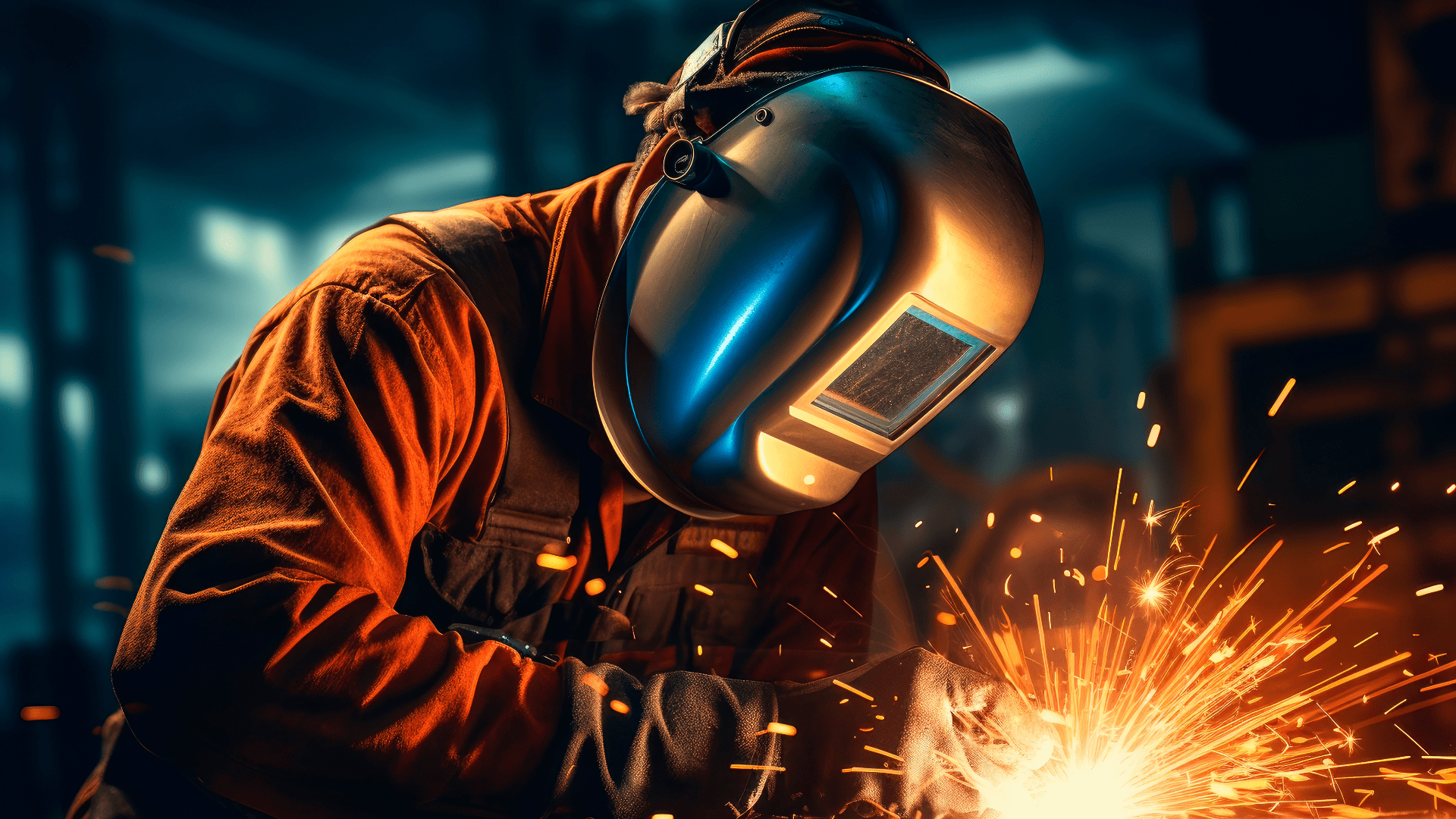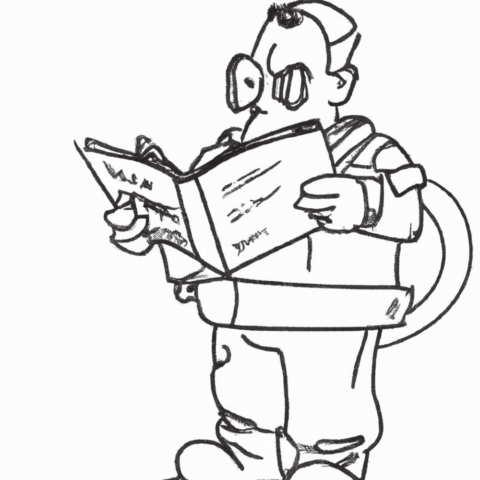Choosing the correct electrode is essential for producing high-quality welds. However, with a wide range of welding electrodes available, selecting the appropriate one for a specific application can be a challenging task. In this guide, we will outline 11 basic steps to consider before selecting the correct electrode. By following these steps, you can ensure that you choose the right electrode for your welding project, resulting in strong and durable welds.
In this guide:
Huge Savings on MMA Electrodes!
We offer a wide range of MMA Stick Electrodes for a wide variety of metals and applications!

Base Material Analysis
When choosing the correct electrode, it is important to analyse the base material. The material analysis can determine the strength, ductility, and other properties of the base material. This information is crucial for selecting the appropriate electrode that can match or exceed the properties of the base material.
The composition of the base material is often identified by a chemical analysis. The chemical composition of the base material can vary widely, and certain elements can affect the welding process and the properties of the weld. For example, carbon steel, stainless steel, and aluminium have different compositions that require different electrodes for welding.
The mechanical properties of the base material, such as tensile strength and hardness, can also affect electrode selection. For example, a high-strength steel would require an electrode with a matching tensile strength to ensure the weld has the same strength as the base material.
The base material analysis can also reveal any potential issues that may arise during the welding process, such as susceptibility to cracking or porosity. These issues can be addressed by selecting the appropriate electrode and adjusting the welding parameters.
Analysing the base material is a critical step in electrode selection. It can help ensure that the electrode selected can match or exceed the properties of the base material, resulting in a high-quality weld.
Electrode Properties and Joint Preparation
The properties of the welding electrode and the joint preparation are crucial factors to consider before selecting the correct electrode. Here are some important points to keep in mind:
Can the electrode match the base material properties?
The analysis of the base material is critical in selecting the correct electrode. The electrode must have similar or compatible properties to the base material, such as ultimate tensile strength (UTS) and yield strength, to achieve a high-quality weld. The welding supplier should provide information on the suitable electrode for a specific base material.
What joint preparation is required for the electrode?
The joint preparation required for the electrode depends on the welding process, base material thickness, and joint type. Some joint preparations, such as bevelling, chamfering, or grooving, are necessary for better penetration and fusion of the base material. Welders should consult the welding procedure specification (WPS) for the recommended joint preparation.
By ensuring the electrode matches the base material properties and preparing the joint correctly, welders can ensure a high-quality weld with excellent mechanical properties.
Pre-heating and Post-heating
Pre-heating and post-heating are essential steps that need to be considered when welding. Pre-heating involves heating the base material before welding, while post-heating involves heating the material after welding. The purpose of pre-heating and post-heating is to reduce the risk of thermal shock, prevent cracking, and improve the weld quality.
Will pre-heating/post-heating be necessary?
The need for pre-heating and post-heating depends on the base material and the welding process used. Certain materials, such as thick sections of steel, may require pre-heating to prevent cracking. Additionally, materials that are prone to cracking, such as cast iron, may require post-heating to prevent cracking after welding.
How to determine the appropriate pre-heating/post-heating temperature
The appropriate pre-heating and post-heating temperature can be determined by considering several factors, such as the base material type and thickness, the welding process used, and the desired outcome. In general, pre-heating should be done slowly and evenly to prevent thermal shock, and the temperature should be high enough to reduce the risk of cracking but not so high as to cause oxidation or warping.
Pre-heating and post-heating are essential steps that need to be considered when welding. They help to prevent cracking, improve weld quality, and reduce the risk of thermal shock. By considering the base material and the welding process used, welders can determine the appropriate pre-heating and post-heating temperatures to achieve the desired outcome.
Welding Power Source
When choosing the right electrode for your welding project, it’s also important to consider the welding power source that is available. The welding power source provides the electrical current that melts the electrode and fuses it with the base metal.
Different types of welding processes require different types of welding power sources. For example, TIG welding typically uses a DC power source, while MIG and stick welding can use either AC or DC power.
It’s important to choose the correct type of power source to match the welding process and the properties of the base metal. AC power is typically used for welding aluminium and magnesium, while DC power is used for welding steel, stainless steel, and other metals.
Choosing the wrong type of power source can result in poor weld quality, increased spatter, and difficulty in striking an arc. It’s essential to consult the welding machine’s manual and the electrode manufacturer’s specifications to ensure the correct power source is selected for the welding process and electrode being used.
Selecting the appropriate welding power source is a critical factor in achieving quality welds. Ensure you choose the right type of power source (AC or DC) to match the welding process and base metal properties for optimal results.
Low Hydrogen Type Electrodes
Low Hydrogen Type electrodes are a specific type of welding electrode that are commonly used in industries where high-quality welds are required. These electrodes are designed to minimize the amount of hydrogen that is introduced into the weld metal during the welding process. This is important because hydrogen can cause a variety of issues in the weld, including cracking, porosity, and reduced strength.
To ensure that Low Hydrogen Type electrodes are used effectively, it is important to have a welding power source that has a “Hot Start” feature. A “Hot Start” is a function of the welding machine that provides a short burst of high current at the start of the welding process. This burst of high current helps to establish the arc quickly, which is critical when using Low Hydrogen Type electrodes.
Without a “Hot Start” feature, Low Hydrogen Type electrodes may not work as intended. If the arc does not establish quickly enough, hydrogen can accumulate in the weld pool, leading to a variety of issues. In addition, if the arc is not stable, it can be difficult to control the deposition of the electrode, which can also affect the quality of the weld.
When using Low Hydrogen Type electrodes, it is also important to ensure that they are stored properly. These electrodes are highly sensitive to moisture, and even small amounts of humidity can affect their performance. Ideally, Low Hydrogen Type electrodes should be stored in a heated quiver or vacuum-packed to prevent moisture absorption.
Low Hydrogen Type electrodes are an important type of welding electrode that are commonly used in high-quality welding applications. To ensure that they are used effectively, it is important to have a welding power source with a “Hot Start” feature and to store them properly to prevent moisture absorption. By following these guidelines, welders can ensure that they achieve the best possible results when using Low Hydrogen Type electrodes.
Electrode Diameter
When selecting an electrode, it is crucial to consider the appropriate diameter required for the welding job. The diameter of the electrode plays a vital role in determining the success of the weld. Different welding positions and joint configurations require varying sizes of electrodes.
For example, the root pass typically requires a smaller diameter electrode to ensure accurate placement and penetration. The fill and cap passes, on the other hand, require larger diameter electrodes to achieve maximum deposition and coverage.
Choosing the wrong electrode diameter can lead to several problems, such as lack of fusion, porosity, and even weld failure. It is crucial to consult the welding procedure specifications (WPS) to determine the recommended electrode diameter for each pass and position.
Using the appropriate diameter of the electrode can improve the overall quality of the weld and reduce the likelihood of defects. Welders should also consider the thickness of the base material when selecting the electrode diameter. Thicker materials may require larger diameter electrodes to achieve proper penetration.
The selection of the appropriate diameter of the electrode is a critical factor in producing quality welds. By understanding the requirements of the welding job, consulting the WPS, and considering the thickness of the base material, welders can choose the right electrode diameter for each pass and position to ensure optimal results.
Ventilation and Fume Extraction
Welding can produce hazardous fumes and gases that can pose health risks to welders and those working in the surrounding area. When selecting an electrode, it is important to consider whether the welding process will give off noxious fumes and if adequate ventilation and fume extraction are in place to mitigate the risk.
Welding fumes can contain toxic metals, such as lead and cadmium, as well as harmful gases, such as nitrogen oxide and carbon monoxide. The inhalation of these fumes can cause short-term health effects, such as dizziness and nausea, as well as long-term effects, such as lung cancer and neurological damage.
To reduce the risk of exposure to welding fumes, adequate ventilation and fume extraction systems should be in place. Ventilation can be achieved through natural ventilation, such as opening doors and windows, or through mechanical ventilation systems, such as fans or exhaust systems. Fume extraction systems can remove fumes directly at the source, such as through the use of a fume extractor torch or a fume extraction unit.
When selecting an electrode, it is important to consider whether the welding process will require additional ventilation or fume extraction systems. Some electrodes, such as low hydrogen electrodes, may require more extensive fume extraction due to the fumes they produce.
In addition to adequate ventilation and fume extraction systems, welders should also wear appropriate personal protective equipment, such as respirators, to further reduce the risk of exposure to welding fumes.
By considering the potential hazards associated with welding fumes and implementing adequate ventilation and fume extraction systems, welders can ensure a safe and healthy working environment.
Electrode Approvals
When choosing an electrode, it is essential to ensure that it has all the necessary approvals for your particular application. In the UK, electrodes must comply with the European Standard EN ISO 2560, which specifies the requirements for electrode coatings and classification. In the US, the American Welding Society (AWS) sets the standards for welding consumables.
Choosing cheap electrodes may seem like a good way to save money, but it can end up costing more in the long run. Cheap electrodes may not meet the necessary approvals, which can lead to substandard welds and potential safety hazards. These electrodes may also have inconsistent quality and lack the necessary traceability, which can make it difficult to identify and rectify any issues that arise.
When purchasing electrodes, make sure to source them from reputable suppliers who can provide documentation that proves compliance with relevant standards. It is also important to avoid buying electrodes from unknown sources or unlicensed manufacturers, as these products may not have undergone proper testing or meet required safety standards.
It is crucial to choose electrodes that have the necessary approvals for your application and to source them from reputable suppliers. Cutting corners with cheaper, unapproved electrodes can result in substandard welds, safety hazards, and potentially costly rework.
Electrode Storage
Proper storage of welding electrodes is crucial for ensuring their quality and performance during welding. The following are some techniques for storing electrodes properly:
- Store electrodes in a dry place: Moisture can cause problems for welding electrodes, so they should be kept in a dry place, away from water or any other sources of moisture.
- Keep electrodes in their original packaging: Welding electrodes should be stored in their original packaging to protect them from atmospheric contamination.
- Use airtight containers: If the original packaging has been opened, the electrodes should be placed in an airtight container to prevent moisture from getting in.
- Keep electrodes away from extreme temperatures: High temperatures can cause electrodes to deteriorate, while low temperatures can cause them to become brittle. Therefore, electrodes should be stored at room temperature.
- Use a heated storage container: If the welding environment is particularly humid, a heated storage container, such as an electrode oven or quiver, can be used to keep the electrodes dry. This container is designed to maintain a low humidity level.
The effects of humidity and temperature drops on welding electrodes
Humidity and temperature drops can have a significant impact on the quality of welding electrodes. If the electrodes are exposed to high humidity or temperature drops, the flux coating can become contaminated, causing porosity in the weld. Contaminated electrodes can also lead to an unstable arc, which can cause problems with weld penetration and fusion.
To prevent humidity and temperature-related problems, welding electrodes should be stored in a dry place at room temperature. If the welding environment is particularly humid, a heated storage container can be used to keep the electrodes dry. Welding electrodes should be checked for any reduction in diameter, which could indicate a loss of flux coating due to atmospheric contamination. If the coating has been chipped, it could lead to atmospheric contamination of the weld deposit.
Proper storage techniques are essential for maintaining the quality of welding electrodes. Welding electrodes should be stored in a dry place at room temperature, in their original packaging or an airtight container. If the welding environment is particularly humid, a heated storage container can be used to keep the electrodes dry. By following these storage techniques, welders can ensure that their electrodes perform at their best during welding.
Flux Coating Condition
The condition of the flux coating on the welding electrode is critical to the quality of the weld deposit. It is essential to check the condition of the flux coating before use, as damaged coating can lead to atmospheric contamination of the weld deposit.
When the flux coating is chipped or cracked, it can result in the introduction of contaminants into the weld deposit, leading to porosity, cracking, and reduced strength. Additionally, if the flux coating is not uniformly concentric, it can lead to uneven deposition of the weld, resulting in poor quality and potential defects.
To avoid issues caused by damaged flux coating, it is recommended to inspect the electrodes before use. Check the electrodes for any signs of damage, such as chipping or cracking, and discard any electrodes with damaged coating.
It is also crucial to store the electrodes properly, as improper storage can damage the flux coating. Ensure that the electrodes are stored in a dry and temperature-controlled environment, away from sources of moisture and extreme temperature changes.
By checking the condition of the flux coating and storing the electrodes properly, welders can ensure high-quality welds with minimal defects and avoid unnecessary rework or repairs.
Drying Low Hydrogen Electrodes
Low Hydrogen electrodes, also known as Low Hydrogen Electrode Coatings (LHEC), are often used in critical welding applications where the weld’s mechanical properties must be of the highest quality. However, these electrodes are hygroscopic, meaning they can absorb moisture from the atmosphere, which can significantly affect their performance.
The Need to Dry Low Hydrogen Electrodes Prior to Use
Low Hydrogen electrodes must be dried before use to remove any absorbed moisture. If not, the moisture can lead to several issues, such as:
- Porosity: Moisture in the coating can cause gas pockets to form in the weld, leading to porosity.
- Hydrogen-induced cracking: Excess hydrogen can lead to hydrogen-induced cracking, which can weaken the weld.
- Lack of fusion: Moisture can also cause a lack of fusion in the weld, leading to weak spots in the joint.
How to Dry Low Hydrogen Electrodes
To dry Low Hydrogen electrodes, there are several methods available:
- Oven drying: This is the most common method and involves placing the electrodes in a drying oven at a temperature of 250 to 300 degrees Fahrenheit for 1 to 2 hours.
- Portable electrode quivers: These are designed to keep the electrodes dry and at a constant temperature. They are ideal for site work and can dry the electrodes in 2 to 4 hours.
It is important to note that over-drying can also cause issues, such as coating damage and porosity. Therefore, it is crucial to follow the manufacturer’s recommended drying time and temperature to ensure the electrodes’ optimal performance.
Drying Low Hydrogen electrodes before use is critical to ensuring high-quality welds. Using the appropriate method to dry the electrodes and adhering to the manufacturer’s recommended drying time and temperature can prevent several issues that can compromise the weld’s integrity.
Recap
Choosing the right welding electrode is a critical step in producing a successful weld. To recap, there are 11 essential steps to consider before making your weld:
- Consider the analysis of the base material.
- Ensure the electrode matches the base material properties.
- Determine the required joint preparation.
- Evaluate if pre/post heating is necessary.
- Identify the power source welding machine available.
- Determine if AC or DC welding power is required.
- Check if a “Hot Start” is needed for Low Hydrogen Type electrodes.
- Identify if different electrode diameters are required.
- Consider fume extraction for noxious fumes.
- Verify that the electrode has all necessary approvals.
- Check the condition of the flux coating.
It’s crucial to take the time to consider these steps before selecting a welding electrode to ensure the best results. By choosing the right electrode for your specific welding job, you can achieve a high-quality and durable weld that meets your expectations. Remember, selecting the correct welding electrode is an investment in your welding project, and taking the time to consider each of these steps will pay off in the long run.




